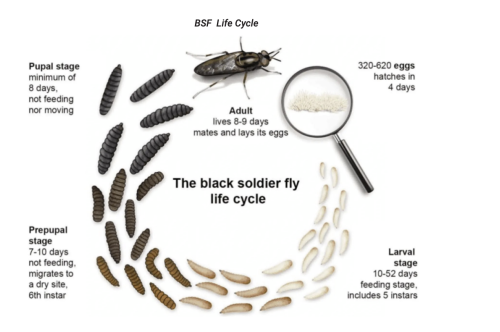A Comprehensive Guide On Vermicomposting
Vermicomposting: A Comprehensive Guide
Definition of VermicompostingVermicomposting is a biological process in which earthworms break down organic waste and convert it into a nutrient-rich compost known as vermicompost. This natural fertilizer enhances soil quality, improves plant growth, and is an eco-friendly method of waste disposal.
What is Vermicomposting?
Vermicomposting is a scientific and sustainable method of composting that utilizes earthworms to decompose organic material. These worms consume organic matter, digest it, and excrete nutrient-dense vermicast, which contains essential minerals like nitrogen, phosphorus, magnesium, calcium, and potassium.
Vermiculture vs. Vermicomposting
Vermiculture refers to the practice of breeding and cultivating earthworms.
Vermicomposting is the process of using these worms to decompose organic waste and produce nutrient-rich compost.
Methods of Vermicomposting
There are two primary methods of vermicomposting:
1.Bed Method: Involves preparing beds of organic matter for earthworms to feed on. This method ensures proper aeration and moisture retention, making it the most efficient approach.
2.Pit Method: Organic waste is placed in cemented pits. However, this method is less common due to issues like poor aeration and waterlogging.
Process of Vermicomposting
Aim
To create nutrient-rich vermicompost by utilizing earthworms and biodegradable waste.
Principle
The goal of vermicomposting is to enhance soil fertility and structure. Earthworms aid in this process by consuming organic matter, breaking it down in their digestive system, and excreting nutrient-rich castings that improve soil quality and plant health.
Nutrient Profile of Vermicompost
Nitrogen (N) – 1.6%
Phosphorus (P) – 0.7%
Potassium (K) – 0.8%
Calcium (Ca) – 0.5%
Magnesium (Mg) – 0.2%
Iron (Fe) – 175 ppm
Manganese (Mn) – 96.5 ppm
Zinc (Zn) – 24.5 ppm
Materials Required
- Water
- Cow dung
- Thatch roof
- Soil or sand
- Gunny bags
- Earthworms (such as Eisenia fetida)
- Weed biomass
- A large bin (plastic or cemented tank)
- Dry straw and leaves (e.g., from paddy fields)
- Biodegradable waste from fields and kitchens
Step-by-Step Procedure
- Choose a Container: Use a plastic or concrete tank. The size depends on the amount of organic material available.
- Pre-treat Biomass: Allow organic waste to dry in sunlight for 8–12 days before chopping it into smaller pieces.
- Prepare Cow Dung Slurry: Sprinkle this over the waste to accelerate decomposition.
- Create a Base Layer: Add a 2–3 inch layer of soil or sand at the bottom of the tank.
- Add Bedding Material: Mix dried leaves, partially decomposed cow dung, and biodegradable waste to form a uniform layer over the sand.
- Layer the Organic Waste: Add chopped bio-waste and partially decomposed cow dung in layers until the tank is filled up to 0.5–1.0 ft depth.
- Introduce Earthworms: Release selected species of earthworms onto the compost mixture.
- Cover the Mixture: Use dry straw or gunny bags to protect the worms and maintain moisture levels.
- Maintain Moisture and Temperature: Regularly sprinkle water and check for overheating.
- Protect the Compost: Use a thatch roof to prevent pests (e.g., ants, lizards, mice, snakes) and protect from excessive rain and sunlight.
Expected Outcome
After approximately 24 days, the organic material will have fully decomposed, and 4000–5000 new worms will have been generated. The finished product is a nutrient-rich vermicompost ready for agricultural use.
Advantages of Vermicomposting
Enhances Soil Fertility: Enriches the soil with essential nutrients.
Improves Soil Structure: Enhances aeration, drainage, and moisture retention.
Supports Plant Growth: Provides growth hormones like auxins and gibberellic acid.
Boosts Crop Yield: Leads to healthier and more productive plants.
Eco-friendly Waste Management: Reduces landfill waste and promotes recycling.
Reduces Soil Erosion: Strengthens soil particles and increases water retention.
Disadvantages of Vermicomposting
Time-Consuming: The process can take up to six months for complete decomposition.
Odor Issues: Decomposing waste may produce unpleasant smells.
High Maintenance: Requires regular monitoring of moisture levels and worm feeding.
Pest and Pathogen Growth: Can attract fruit flies, centipedes, and other pests.
Moisture Sensitivity: Worms cannot survive if the environment is too dry or too wet.
How Vermicomposting Works
1.Earthworms consume organic waste, breaking it down within their digestive system.
2.The digested matter is excreted as vermicast, which is rich in essential plant nutrients.
3.The compost improves soil structure, drainage, and water-holding capacity.
Harvest and Process:
Once the compost is ready, separate the worms and use the compost in agriculture.
Conclusion
Vermicomposting is a sustainable and eco-friendly method of converting organic waste into nutrient-rich compost. It plays a vital role in improving soil fertility, reducing environmental pollution, and promoting sustainable agriculture. While it requires time and maintenance, the benefits of vermicompost far outweigh the drawbacks, making it an excellent natural fertilizer for farming and gardening.
By adopting vermicomposting, individuals and communities can contribute to waste reduction and sustainable agricultural practices while enhancing soil health and plant growth.


